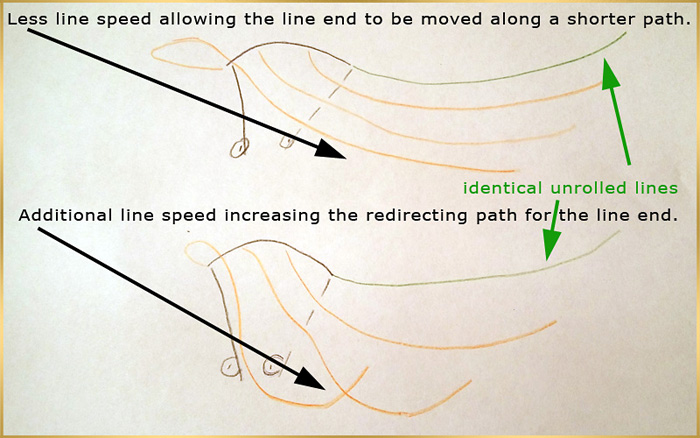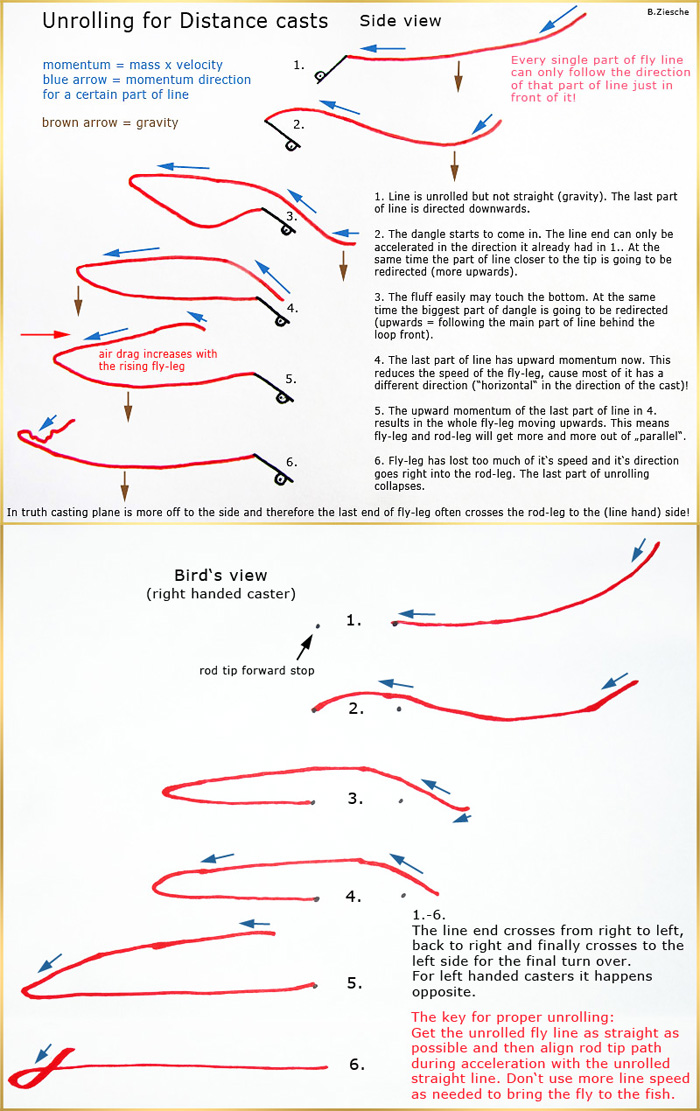Have been deeply into fishing for quite a while. Time to join some of the fine discussions here again!
Some time ago I was sitting in a tree above Paul's forward distance cast in order to identify the cause for (what we back then called) the distance phenomenon. Lots of slomos were involved in the discussion afterwards. The cause and it's details were all in those vids, but we didn't see/understand them at that time.
Later on I found the cause and since then didn't stop to further investigate. Of course once you understand a cause you start to realize things that you never did before...
Paul and I back then also didn't find the reason why almost all my none hauled casts ended up pretty straight, nicely unrolled while the hauled ones always broke out to the line hand side (distance phenomenon) in windless conditions. I remember Mike (Heritage) saying "Ok, now Bernd was here and we all know that our distance casting sucks."
Some weeks ago I found another piece of the puzzle.
Comparing my none hauled casts with the hauled ones means:
For the none hauled ones...
a) I use pull back in my back cast, which helps me to straighten out the unrolled line a lot.
b) I aerialize litte less line and therefore get little less line sack, too.
c) I create less line speed in the forward cast. Due to that my line end will be moved in a significant straightened path. This was (I think) the key understanding I was missing.
When having a line sack in my back cast and then starting the forward cast with immense acceleration I just pronounce the line end crossing over in the end of the cast. Reducing line speed helps me to reach greater distance instead. That is unless I get a tailwind. The tailwind helps to get the line straight anyway. The stronger the wind will be, the more I can increase line speed and get properly away with some line sack.
So for me in windless days there is a "sweet level" in line speed for my distance casts based on how big the line sack in the final bc will be.
If I pass/overcome it, my fc gets worse and worse. Experimenting with all this has helped me a great deal in understanding distance casting.
From the technical point of view from you fine physicists here does this make sense to you? :

My conclusion though would be, that less line speed shortens fly-path for the actual cast based on a given line sack in the unrolled (previous) cast. Of course less line speed unless it gets too little...
This would also help to answer the often discussed question why we often hit nearly the same distance while reducing line speed quite significantly.
Thanks a lot for your professional views!
Bernd

